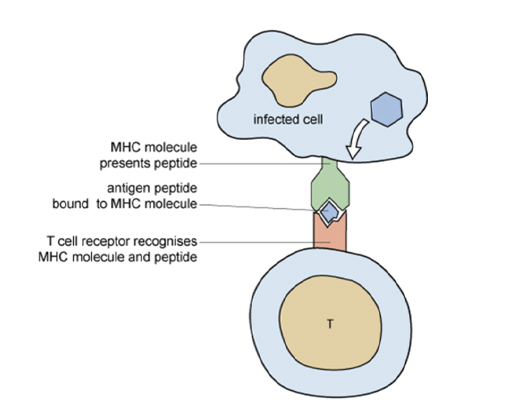1.1 Cytotoxic T cells
T cells recognise antigens through their T cell receptor (TCR). To be precise, T cells recognise antigen fragments presented to them by cell-surface molecules encoded by the major histocompatibility complex (MHC molecules), shown in Figure 1. There are in fact, two types of MHC molecule – class I and class 2. Here we will concentrate on MHC class I molecules. All cells of the body continuously sample their own internal proteins and present polypeptide fragments on the cell surface bound to MHC class I molecules.
Internal molecules of the cell, which can be any intracellular molecule including a viral antigen (blue hexagon) are broken down into peptide fragments. These antigenic peptides are presented by MHC molecules on the cell surface, where they may be recognised by T cells that have an appropriate T cell receptor. (Note: in Figure 1 and later diagrams, the scale of the cells and the receptor molecules will differ.)
If the cell has become infected by a virus, then polypeptide fragments of viral proteins will also be presented by the MHC class I molecules. If a cytotoxic T cell recognises the antigen fragment+MHC molecule, then it can signal to the infected cell to induce apoptosis – programmed cell death. You will learn more about this later, but first you will look in a bit more detail at the MHC molecules.

